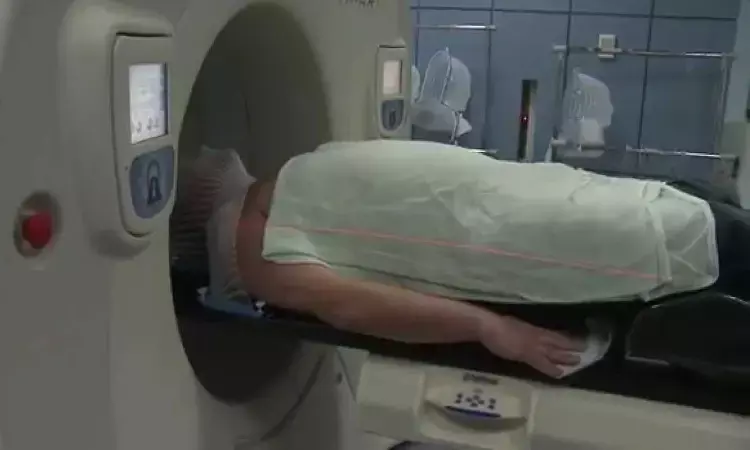- Home
- Medical news & Guidelines
- Anesthesiology
- Cardiology and CTVS
- Critical Care
- Dentistry
- Dermatology
- Diabetes and Endocrinology
- ENT
- Gastroenterology
- Medicine
- Nephrology
- Neurology
- Obstretics-Gynaecology
- Oncology
- Ophthalmology
- Orthopaedics
- Pediatrics-Neonatology
- Psychiatry
- Pulmonology
- Radiology
- Surgery
- Urology
- Laboratory Medicine
- Diet
- Nursing
- Paramedical
- Physiotherapy
- Health news
- Fact Check
- Bone Health Fact Check
- Brain Health Fact Check
- Cancer Related Fact Check
- Child Care Fact Check
- Dental and oral health fact check
- Diabetes and metabolic health fact check
- Diet and Nutrition Fact Check
- Eye and ENT Care Fact Check
- Fitness fact check
- Gut health fact check
- Heart health fact check
- Kidney health fact check
- Medical education fact check
- Men's health fact check
- Respiratory fact check
- Skin and hair care fact check
- Vaccine and Immunization fact check
- Women's health fact check
- AYUSH
- State News
- Andaman and Nicobar Islands
- Andhra Pradesh
- Arunachal Pradesh
- Assam
- Bihar
- Chandigarh
- Chattisgarh
- Dadra and Nagar Haveli
- Daman and Diu
- Delhi
- Goa
- Gujarat
- Haryana
- Himachal Pradesh
- Jammu & Kashmir
- Jharkhand
- Karnataka
- Kerala
- Ladakh
- Lakshadweep
- Madhya Pradesh
- Maharashtra
- Manipur
- Meghalaya
- Mizoram
- Nagaland
- Odisha
- Puducherry
- Punjab
- Rajasthan
- Sikkim
- Tamil Nadu
- Telangana
- Tripura
- Uttar Pradesh
- Uttrakhand
- West Bengal
- Medical Education
- Industry
Combination therapy with radiation shows promise in treating glioblastoma

Radiation therapy is part of the standard-of-care treatment regimen for glioblastoma, often helping prolong the survival of patients. However, survival times have not improved significantly over the past two decades and attempts to improve the efficacy of radiotherapy through the use of pharmaceuticals have been hampered by the normal tissue toxicity of the drugs and the inability to penetrate the blood-brain barrier.
In a study of mice, researchers at the UCLA Jonsson Comprehensive Cancer Center have identified a new approach that combines an anti-psychotic drug, a statin used to lower high cholesterol levels, and radiation to improve the overall survival in mice with glioblastoma. Glioblastoma is one of the deadliest and most difficult-to-treat brain tumors. Researchers found the triple combination extended the median survival 4-fold compared to radiation alone.
UCLA researchers previously reported that the first-generation dopamine receptor antagonist trifluoperazine in combination with radiation prolonged survival in mouse models of glioblastoma, but ultimately, the mice become resistant to the therapy. To help overcome this resistance, the team used quetiapine, a second-generation dopamine receptor antagonist, which not only enhanced the efficacy of radiotherapy in glioblastoma but also generated a metabolic vulnerability in the lipid homeostasis. The discovery that the combination induced the cholesterol biosynthesis pathway allowed the team to target this process with statins.
The team tested the approach using patient-derived glioblastoma lines provided by the Biospecimen and Pathology Core of the UCLA SPORE in Brain Cancer. Quetiapine was identified in a screen of dopamine receptor antagonists for their ability to prevent phenotype conversion of non-tumorigenic glioblastoma cells into radiation-induced glioma initiating cells. Atorvastatin (Lipitor) was selected because of its known ability to cross the blood-brain-barrier.
While radiation alone prolongs survival of glioblastoma to some extent, attempts to enhance the treatment have not been successful. The results of the study provide evidence that using a dopamine receptor antagonist in combination with Atorvastatin and radiation may help extend the survival for people with glioblastoma. The combination therapy also includes FDA-approved drugs that can rapidly be translated into a clinical trial.
https://academic.oup.com/jnci/advance-article-abstract/doi/10.1093/jnci/djab018/6129263?redirectedFrom=fulltext
Hina Zahid Joined Medical Dialogue in 2017 with a passion to work as a Reporter. She coordinates with various national and international journals and association and covers all the stories related to Medical guidelines, Medical Journals, rare medical surgeries as well as all the updates in the medical field. Email: editorial@medicaldialogues.in. Contact no. 011-43720751
Dr Kamal Kant Kohli-MBBS, DTCD- a chest specialist with more than 30 years of practice and a flair for writing clinical articles, Dr Kamal Kant Kohli joined Medical Dialogues as a Chief Editor of Medical News. Besides writing articles, as an editor, he proofreads and verifies all the medical content published on Medical Dialogues including those coming from journals, studies,medical conferences,guidelines etc. Email: drkohli@medicaldialogues.in. Contact no. 011-43720751


